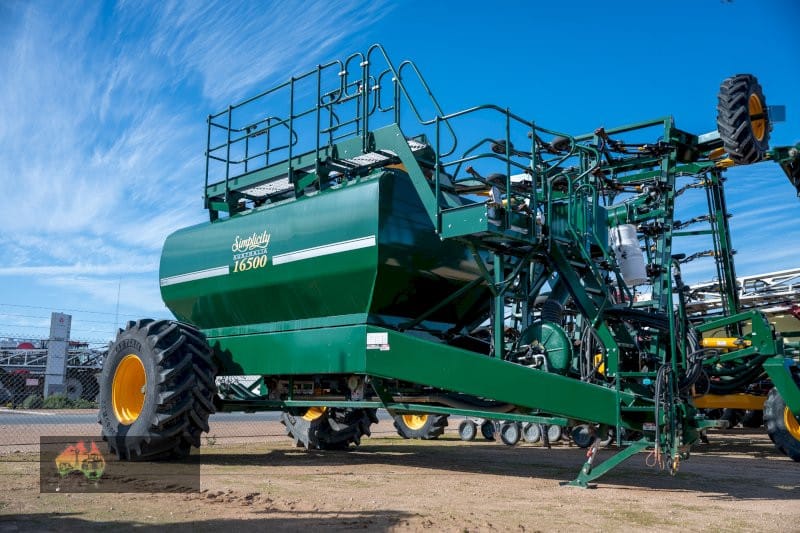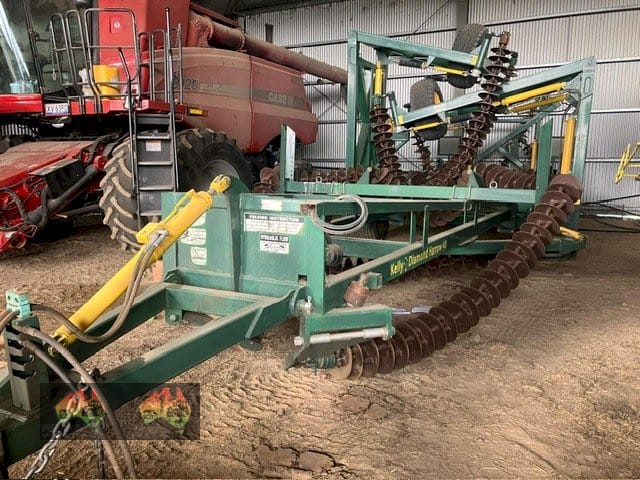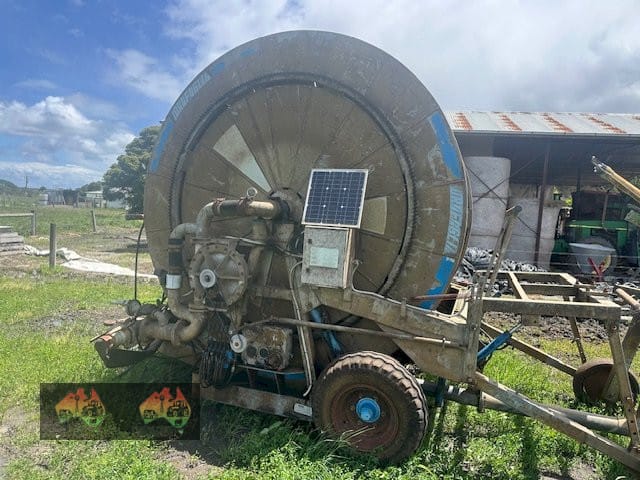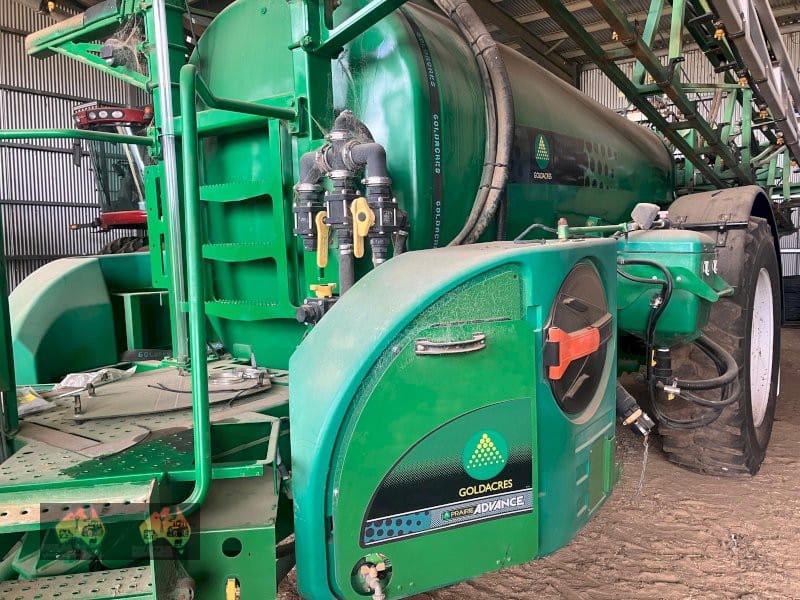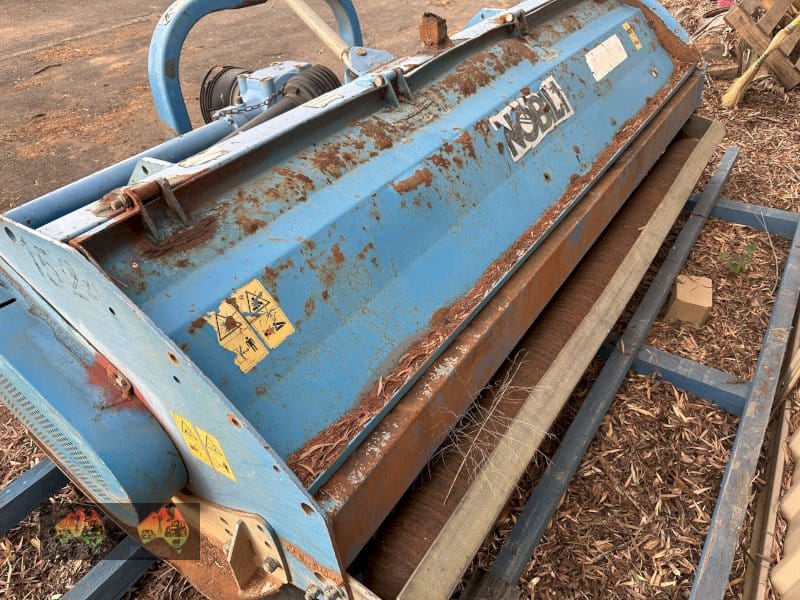- REALM Group Newsletter
- Posts
- REALM Group Australia Newsletter RGA W/E- 21/11/25
REALM Group Australia Newsletter RGA W/E- 21/11/25

F E A T U R E D
ARTICLE 925
The wait to taste new Queensland-grown purple-skinned pineapples
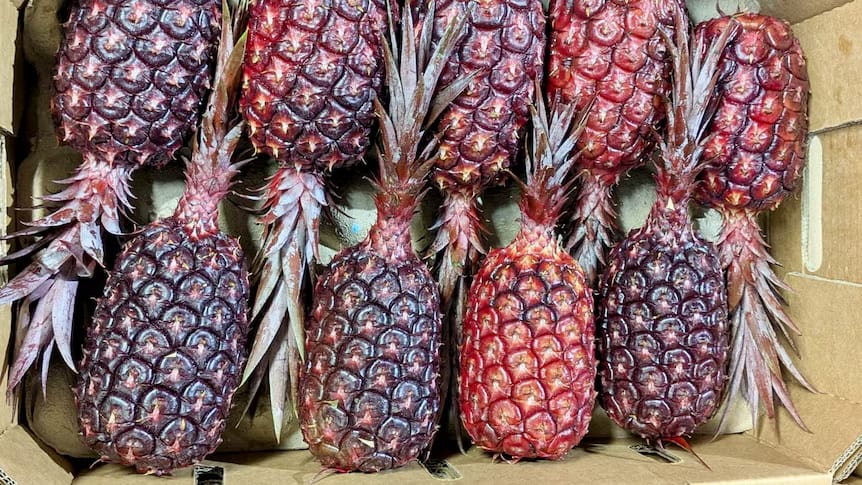
The purple pineapple crowns will be grown to expand the unusual crop. (Supplied: Piñata Farms)
In short:
A south-east Queensland farm is growing purple-skinned pineapples.
Piñata Farms sourced two purple pineapple varieties from Brazilian breeders to trial in Australia's challenging environment.
What's next?
It could take 10 years to produce commercial qualities of the novel fruit.
Striking new purple-skinned pineapples are being trialled in Queensland, but the wait to taste them could take 10 years.
Australian-grown pineapples are traditionally coloured green and gold.

Purple pineapples packed by Piñata Farms for consumer taste testing. (Supplied: Piñata Farms)
Piñata Farms sourced two purple pineapple varieties from Brazilian breeders to trial in Australia's challenging environment.
One of the yet-to-be-named "novel" purple fruits, with sweet, bright white, low-acid flesh, has proven particularly promising.

The flesh of the purple-skinned pineapple is white. (Supplied: Piñata Farms)
The Scurr family, which owns and operates Piñata Farms, said consumer feedback on this year's tiny trial harvest at Wamuran in south-east Queensland was "overwhelming".
"I guess it's novel. People just haven't seen purple pineapples," Piñata Farms's managing director Gavin Scurr said.

Gavin Scurr is testing pineapple varieties. (ABC Rural: Jennifer Nichols)
Desired by royalty
Native to South America, pineapples wowed European royalty after explorer Christopher Columbus encountered them in the Caribbean in 1493.
Rare, exotic and tricky to transport and cultivate in colder climates, the tasty tropical fruit became a status symbol.
Some nobles even rented them to display at dazzling dinner parties.
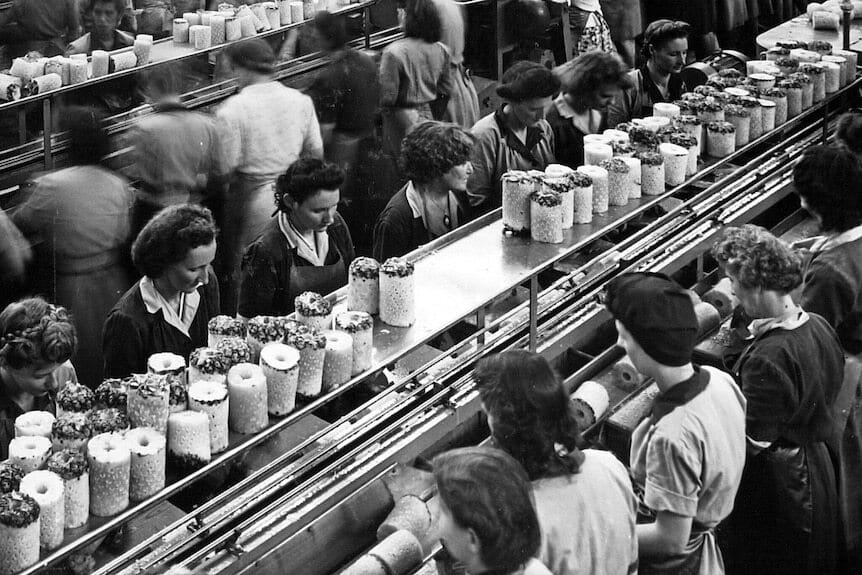
The Golden Circle cannery has been operating at Northgate since 1947. (Supplied: Queensland State Archives)
Polarisers on Pizzas, Pineapples have been grown in Queensland for more than 180 years and canned in Brisbane since 1947.
They were such a delicacy that about 500 cases were shipped to Queen Elizabeth II as a wedding gift.

Queen Elizabeth II received about 500 cases of canned pineapple from Brisbane's Golden Circle factory as a wedding gift. (Supplied: Queensland State Archives)
And now the wait
For now, purple-skinned pineapples are as rare in Australia as the first fruit shipped to Europe.
Mr Scurr said it would be about 10 years before they were plentiful on supermarket shelves.

Purple is a natural colour in the bromeliad family. (Supplied: Piñata Farms)
Pineapples, which are edible bromeliads, grow when clusters of fertilised flowers fuse to form a fruit.
They can take up to two years to be ready to harvest
New plants are cultivated from pineapple crowns, or the small suckers (pups) that grow from the base of a mature plant.

An unusual pineapple at the Maroochy Research Centre. (ABC Rural: Jennifer Nichols)
The Scurrs started with just 12 purple pineapples, six each of the two different Brazilian varieties, and now have 2,000 plants.
"We've got a handful of plants that we then need to turn into millions of plants," Mr Scurr said.
"Each generation takes two years.
"We then need to make sure that it actually yields, the fruit size is OK, and that it can handle weather events that are becoming more and more extreme."

Fresh pineapples in a Glasshouse Mountains field. (ABC Rural: Jennifer Nichols)
Queensland is the heart of Australian pineapple production.
The Horticultural Statistics Handbook showed that 76,220 tonnes of pineapple, worth $84.6 million, were produced between the Sunshine Coast and Mareeba in the 2023/24 financial year.
Australian Pineapples vice-chairperson Sam Pike is 15 years into his own journey to improve Australia's most cultivated fresh pineapple variety, "73-50".

Sam Pike has been naturally selecting plants to improve productivity. (Supplied: Sam Pike)
He has been naturally selecting the best pineapples from his fields and multiplying them for better productivity and shape, for release early next year.
The fourth-generation grower praised the Scurrs' purple-skinned pineapple trial for offering consumers more choice.
"I love the idea of it. I think it's great," Mr Pike said.

Pineapples are being harvested near Yeppoon, central Queensland. (ABC Capricornia: Rachel McGhee)
With the industry challenged by "skyrocketing" production costs, Mr Pike said growers' goal was for "consumers to be able to buy a good piece of fruit for a reasonable price".
He said Australia did not import fresh pineapples; they were all Australian-grown.
"We take pride in what we deliver to the marketplace."
Pay In-Time Finance
Weather Pressure, Market Strength: What Farmers Need to Know This Week
It’s been another week where Australian farmers are watching the sky as closely as the markets. The patchy rainfall across Western NSW, Victoria and SA has brought a little relief, but nowhere near enough to ease the pressure on dry paddocks. Many growers are now running the numbers on whether to push ahead with full cropping programs or scale back and protect cash flow. With inputs rising and moisture still inconsistent, every decision feels heavier than usual.
Livestock producers are navigating their own mix of challenges and opportunities. Despite the dry, cattle prices have shown surprising stability, with some categories even lifting as global supply disruptions put a floor under the market. For many operations, this is the first real sign of positivity in a while — a reminder that markets don’t always move in line with the weather, and good timing can pay off.
Add to that the energy returning to the rural sector as major field days ramp back up. Attendance is strong, interest in new machinery is high, and producers are clearly planning ahead. Even in tough seasons, farmers are thinking long-term — upgrading systems, considering new tech, and positioning themselves for when conditions turn.
At Pay In Time Finance, we’re helping farmers turn this mix of pressure and opportunity into a clear path forward. Whether you’re tightening inputs, preparing for a restock, or looking at upgrading gear before prices move again, the right finance structure makes all the difference.
If you'd like options built around your farm’s exact timing and cash flow, we can map them out this week — quick, simple, and tailored.

INPUTS & COMMODITIES
In November 2025, Australian commodity prices showed mixed performance: agricultural prices were mixed, with wheat and barley steady, while some metals like iron ore declined slightly after strong gains in October
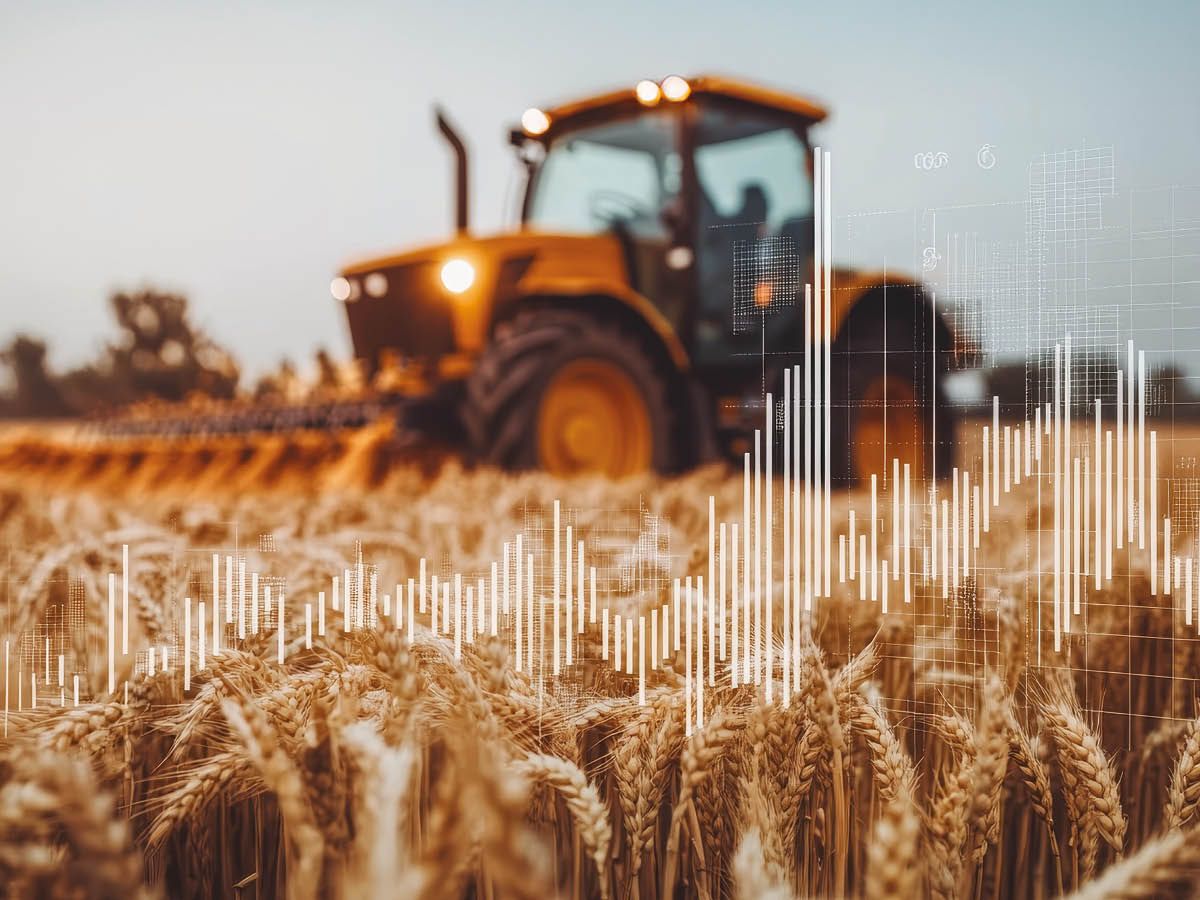
Energy prices were also mixed, with crude oil and aluminum posting gains, but some analysts anticipate a decline in the future. Overall, the RBA's Index of Commodity Prices increased in October but was down year-on-year, mainly due to lower thermal and coking coal prices, partially offset by higher rural commodity prices.
Agricultural commodities
Wheat: Steady at $348/t (H2). Some export demand for high-protein wheat, with domestic markets for lower grades remaining steady, and growers holding back sales.
Barley: Steady at $298/t (feed). Strong crop estimates are expected to limit price increases in the short term, but low domestic stocks and Chinese demand are likely to support prices next year.
Sorghum: Steady at $350/t. Competition from Chinese and Argentine supply is expected to weigh on prices.
Cotton: Prices have found support, rallying 3.3% since mid-October, driven by optimism around US-China trade discussions.
Dairy: Global fundamentals are becoming more bearish due to increasing milk supply, although some major processors are announcing small increases in farmgate milk prices.
Farm Inputs: Downside risk is seen for urea and phosphate prices due to poor affordability.
Metals and minerals
Iron Ore: Declined 1% in October, though elevated port inventories and subdued pig iron output suggest robust demand may be supporting prices.
Gold: Eased after a strong start to October, and is expected to track sideways in the near term.
Copper: Rose a more modest 2% in October.
Aluminum: Posted solid gains of around 5% in October.
Energy commodities
Crude Oil: Posted solid gains of around 5%, but some forecasts suggest a delayed correction is likely, with a downward trend expected.
Coal: Metallurgical coal prices gained around 5% in October, while thermal coal prices were a key driver of a decline in the RBA's Index of Commodity Prices year-on-year.
Natural Gas: Prices are forecast to remain relative outperformers, despite an anticipated modest contraction in aggregate commodity prices.
Liquified Natural Gas (LNG): Lower prices were a key factor in the year-on-year decline of the RBA's Index of Commodity Prices.
AG MACHINERY
CLAAS AXION 9.450 TERRA TRAC is Tractor of the Year 2026 / HighPower
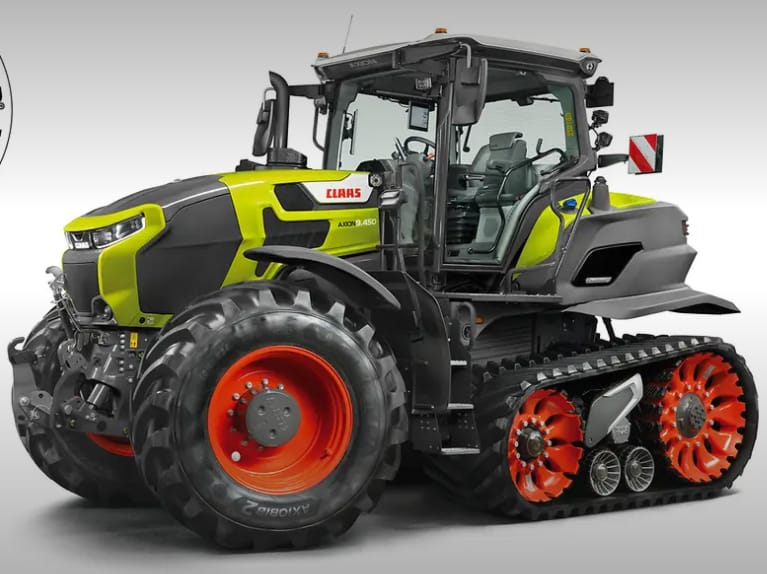
Faced with fierce competition, the new AXION 9.450 TERRA TRAC from CLAAS prevailed against four competitors this year to win the coveted Tractor of the Year Award in the HighPower category. In addition to its unique tractor concept, the award-winning features included intelligent solutions in the areas of driver assistance and machine optimisation, comprehensive digital connectivity and the newly developed, quiet cab.
The premiere of the new AXION 9 CMATIC large tractor series from CLAAS at Agritechnica 2025 was crowned with a highlight on the very first day of the trade fair: the presentation of this year's Tractor of the Year Awards. In the HighPower category, the AXION 9.450 TERRA TRAC with its unique semi-crawler concept prevailed against strong competition from four other contenders. The jury, consisting of 26 international agricultural and agricultural engineering journalists, stated: "The Claas AXION 9.450 TERRA TRAC combines high performance with machine optimisation tools specially developed for large agricultural businesses. (...) Its CCLS hydraulic system delivers a flow rate of up to 370 l/min, with a rear lift capacity of over 11 tonnes and full ISOBUS and Power Beyond connectivity. Intelligent features such as CEMOS, Dynamic Auto Droop and CEBIS connect increase precision, while the four-point suspended cab ensures a high level of comfort at only 66 dB(A). The jury praised AXION's combination of power density, hydraulic performance and data-driven performance management.
Focus on efficiency in development
The AXION 9 CMATIC series sets new standards in comfort, automation and connectivity, and was developed with the aim of bringing maximum performance to large farms and contractors even more efficiently and economically in the field and on the road. Sophisticated and further optimised hardware such as the engine, transmission and axles, as well as TERRA TRAC running gear, have been combined in the series with a completely newly developed cab with a noise reduction of up to 66 dB(A) and a volume of three cubic metres, a new electronic infrastructure and new, intelligent assistance systems up to Level 2 Autonomy. The adaptive, predictive drivetrain management of the continuously variable CMATIC transmission with Auto Load Anticipation – a self-learning algorithm – increases driving comfort, productivity and efficiency. Thanks to extended maintenance intervals, service times and costs for users are also significantly reduced.
"When developing the series, we listened more than ever to the wishes and expectations of farmers and contractors," explains Dr Martin von Hoyningen-Huene, CLAAS Chief Technology Officer. "So we owe this award not only to our innovative developers, but also to our existing and potential customers. The tractor uniquely combines several of our core development competencies, such as soil-conserving chassis technologies and continuously variable power-split transmissions."
Versatile specialist for year-round use
The AXION TERRA TRAC concept impresses with its combination of the advantages of conventional standard tractors and those of crawler tractors, without any of the disadvantages. The large, ground-protecting contact area gives this large tractor unique versatility and enables it to be used all year round, from spring fertilisation with minimal wheel tracks to light to heavy tillage and sowing with optimised traction, to grassland mowing and in-field logistics tasks in harvest chains.
The latest generation of this concept, the AXION 9 TERRA TRAC with up to 450 hp engine power, is a logical further development with the latest electronic infrastructure, premium driving comfort, cloud connectivity in CLAAS connect and automated workflows up to Level 2 Autonomy with the AgXeed VCU (Vehicle Control Unit).
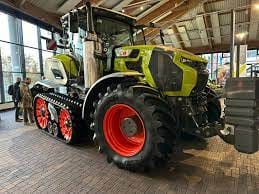 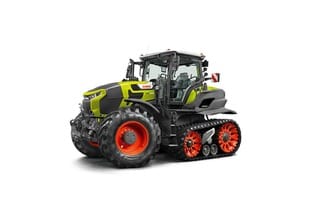 |   | 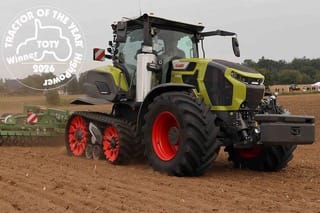 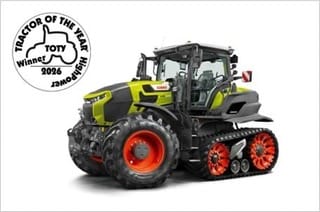 |
For Sale Listings
(List It For FREE!)
Featured Auction Listings
RGA - REALM GROUP AUSTRALIA - MULTI-VENDOR MACHINERY AUCTION, AUSTRALIA WIDE
We’re now taking listings for our next up-and-coming auction.
Contact us today!

AG NEWS AUSTRALIA
Drones for Smarter Crop Monitoring and Mapping in
Australian Agriculture
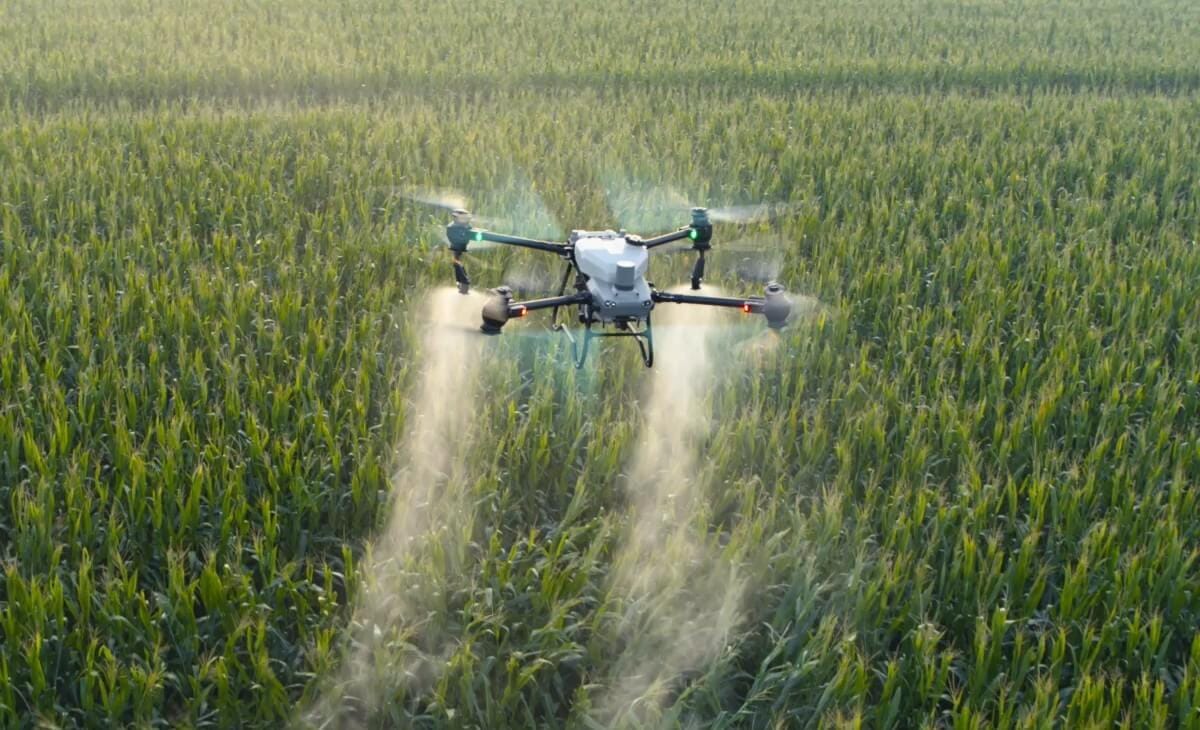
Drones for Smarter Crop Monitoring and Mapping in Australian Agriculture
Across Australia, producers are under mounting pressure to improve productivity, reduce input costs, and build resilience against climate extremes. As these challenges intensify, one technology is proving especially valuable in helping growers operate smarter, faster, and more sustainably: drone-based crop monitoring and mapping.
What was once an emerging innovation is now becoming an indispensable tool on farms—from broadacre operations in WA and Queensland to high-value horticulture in Victoria and Tasmania.
Why Drones Are Transforming Crop Monitoring
Traditional crop scouting relies heavily on manual inspections, ground-based sampling, and scheduled passes that may miss early signs of stress. Drones, equipped with modern sensors, change this dynamic entirely by giving producers:
1. High-Resolution Aerial Insight
Drones capture detailed imagery at centimetre-level resolution—far beyond what satellites can currently provide. This enables growers to:
Detect nutrient stress earlier
Identify weed pressure hotspots
Monitor emergence and crop uniformity
Assess storm, pest or disease damage
Rapid data capture means decisions can be made in hours, not days or weeks.
2. Multispectral & Thermal Crop Health Analysis
Multispectral cameras allow farmers to view fields beyond the visible spectrum, revealing plant health signatures invisible to the naked eye. Using vegetation indices such as NDVI and NDRE, producers can pinpoint:
Subtle early-stage disease outbreaks
Water stress and irrigation inefficiencies
Soil variability affecting yield performance
Thermal sensors add another layer of insight—particularly valuable for irrigation scheduling and canopy temperature analysis.
3. Precision Mapping for Variable Rate Application
Drone-derived orthomosaics and prescription maps support precision agriculture decisions, such as:
Variable rate fertiliser applications
Zoned herbicide and fungicide targeting
Optimised seeding density.
This reduces costs, limits unnecessary chemical use, and improves overall sustainability.
4. Time and Labour Savings
Australia’s agriculture sector continues to face labour shortages. Drone operations, especially autonomous flight platforms, can cover hundreds of hectares in a fraction of the time needed for manual scouting.
For large properties, this change is significant: one drone operator can now perform the work of multiple field staff, with far greater accuracy.
5. Better Data for Compliance & Reporting
High-quality aerial mapping supports:
Seasonal crop performance records
Disaster assistance claims
Environmental compliance audits
Carbon project validation.
Consistent datasets year after year help producers track improvements and validate management decisions.
Real-World Applications Now Shaping Australian Farms
Australian growers are already leveraging drones for:
· Crop emergence assessments in broadacre grains
· Canopy analysis in vineyards, orchards, and sugarcane
· Hail, flood, fire and cyclone damage surveys
· Pre-harvest yield forecasting
· Weed detection and spray targeting
· Pasture grows
· The monitoring of mixed farming operations
Whether supporting remote regions with limited access to agronomists or helping precision growers streamline their operations, drone data is becoming a standard part of the modern farmer’s toolbox.
Drone Platforms
There are many drone manufacturers globally. From experience and feedback from industry participants, the main manufacturer is DJI. DJI have a huge competitive and technological advantage compared to others. DJI have a number of enterprise drone platforms capable of capturing data and providing the required deliverables for the Agriculture Industry. If you're interested in any of the above use cases, please reach out, and I can advise you on which drone platform will best suit the applications you require, taking into account your individual circumstances.
Where the Technology Is Heading
The next few years will see even more capability unlocked through:
AI-powered crop diagnostics
Automated, repeatable flights for daily/weekly monitoring
Real-time analytics directly on the farm
Integration with spray drones for closed-loop precision treatment
As sensors improve and CASA’s regulatory framework evolves, drone-based crop intelligence will continue to drive the next chapter of digital agriculture.
As mentioned in my last article, throughout this series, if you have any questions or would like me to go into more detail on a drone use case or technology, please check out our website or contact me directly. My contact details are on our website www.skyscangeomatics.com.au
Written by Mike Hooker

Simply click www.payintime.com.au to provide your details, and we will be in touch. It all starts with one phone call.
YOUR TOWN
We Have Been to Your Town! We don’t just sit in an office; we are hands-on with our Farmers! 🙌
 |  |  |
Please email us with a picture of yourself or a family member in front of your TOWN-SIGN to [email protected]

Field Notes with RD Creative Studio: Long-Term Insights from the RD x REALM Collaboration
 |  |
What’s the ROI of Trust? 3 Small Signals That Earn Big Sales Over Time
Not every sale in agriculture happens with a handshake these days.
But the principle still holds: trust closes deals, especially when the product is expensive, the service is long-term, or the margins are tight.
The problem is that most businesses don’t know how to signal that trust online. They think being trustworthy in real life is enough. It’s not. You need digital proof that backs it up.
Here’s what buyers pick up on (whether they say it or not):
Signal That’s Missing | What It Suggests | What Buyers Actually Think |
No client examples | No track record | “Who else has trusted them?” |
No before/after results | No measurable impact | “Will this actually work for me?” |
Generic language everywhere | Copy-paste business | “They sound like everyone else.” |
How to Build Digital Trust (in Under an Hour)
1. Pull in one real client result.
Doesn’t need to be a case study. One screenshot, one quote, one tangible before/after is often enough. Anchor it in something specific. Specific = believable.
2. Swap your “Our Story” for a reason to believe.
Not everyone needs a full origin story. But you do need to answer the buyer’s internal question: “Why should I listen to you?”
3. Review your homepage.
Ask yourself: Would a stranger know what kind of problems we solve and for whom? If not, clean up the copy and tighten the visuals.
Small Proof Beats Loud Promises
Trust online doesn’t come from shouting louder. It comes from being easy to understand, easy to verify, and hard to forget.
Want a quick review of how your brand stacks up?
We’re happy to give our take. Sometimes all it takes is tightening the signals you’re already sending.
📬 [email protected]
🔎 More ideas at rdcreativestudio.com.au/blog

Women in Ag
Women Working in and Sustaining Agriculture Worldwide
 2025 Western Australia State Winner | Isabella ThruppIsabella Thrupp is the founder of Prinking in Pindan, a clothing brand inspired by life on cattle stations in the Kimberley. Currently managing Leopold Downs Station alongside her partner, Jacob, Isabella has spent the past five years living and working on remote stations. Her debut product, The Pindan Jeans, sold out within minutes, highlighting the demand for stylish, durable clothing designed for station life. Passionate about empowering rural women, fostering connections between rural and urban communities, and championing sustainability, Isabella is redefining fashion for the outback. |
Dr Mary ColeDr. Mary Cole is an internationally recognised expert in mycology, plant pathology, and soil microbiology with a career spanning over five decades. A pioneer in biological farming and founder of Agpath, she has spent more than 45 years advocating for regenerative agriculture, proving that sustainable practices can enhance yields while significantly reducing input costs. Her work has helped transform farming operations, restore degraded landscapes, and challenge conventional chemical-based agriculture. She has advised farmers globally, led groundbreaking research, and played a key role in legal victories against major chemical corporations. A passionate educator, she recently collaborated on launching a Certificate III in Horticulture focused on industrial hemp production. |  2025 Victoria State Winner |
Welcoming Simon Cheatham – RINGERS FROM THE TOP END with REALM Group Australia

Simon Cheatham- RINGERS FROM THE TOP END (RFTTE)
G'day, REALM Readers!
Last weekend was a cracker in Katherine - after a long season, it was time for cattle station staff to let their hair down... so on Saturday night it was the Govies Gala celebrating the tireless work of Governess's, Home Tutors and Nanny's where frocks were donned and penguin suits dusted off; then on the Sunday, hangovers ignored, hamstrings stretched and boots strapped on, it was a day of Ringers Rugby 7s.
I love the stories of how both events started...
The Ringer’s Rugby 7’s competition originated as an idea between Bella Leonhardt, a former ringer herself, and her dad, Jim. Jim does mechanical work on many stations across the north, and he rounded up a team of ‘ringers’ from stations to play in the 2019 Katherine 7’s competition.
Well, word spread, as it does along the bush telegraph in the North, and eager ringers willing to travel from across the Territory, inspired Bella and Jim to create a tournament just for the north’s ringers.
So, as a wise daughter and Dad would do, they got Mum, Kylie, involved, and in early November 2021, they held the inaugural Ringer’s Rugby 7s Tournament. This tournament hosted 4 men’s teams and 2 women’s teams. It was a great success, and they're now celebrating their fifth consecutive year.
Held at the end of the season, it has become the perfect opportunity for those in the Northern Pastoral industry to celebrate the hard work for the year and have one last catch up with everyone before the wet season. Bella says, "We were aware that there wasn’t really anything else for ringers that perhaps weren’t interested in competing in campdrafts or rodeos throughout the year".
Bella and the family are forever appreciative of the amazing community that generously sponsors and volunteers to help get the event off the ground each year.
And it keeps growing... In 2024, they had 360 registered players; this year, they had 440! Comprising 17 men’s teams and 9 women’s teams, players travelled from as far as Camooweal, Alice Springs and the Kimberleys; not to mention hundreds of supporters from around the country at the ground.
The night before, of course, was the Govies Gala, a night of dinner, dancing, fundraising and a couple of frosty ones. It was an idea Meg Watters thought of in August last year, "I thought it would be a top idea to do something for the governesses in the Territory, so we formed a small committee and with just 3 months of planning, we successfully raised $50,000 for the School of the Air, Katherine at the Govies Gala in 2024."
This year, Meg and her committee of 18 have continued to grow the event with over 350 people in attendance (a sell-out!) - raising $65,000 for the Katherine Isolated Children Services (KICS).
A huge congratulations to both the Leonhardts, Meg and all the volunteers, an inspiration to all - keep up the great work!
Hooroo for now,
Simon Cheatham
0417 277 488 | [email protected]
Founder | Ringers From The Top End | RFTTE.com | The Online Campfire since 2007
RFTTE PTY LTD | ABN 29 678 593 283

“Samantha Watkins Photography”
REALM Group Australia is proud to sponsor amateur photographer Samantha Watkins. We've seen her photography skills grow tremendously over the years, and we believe it's the perfect time for her to step into the photography world.

Click on the link to take you to her FB photography page, where you can see her beautiful photos.
It is called "Samantha Watkins Photography" https://www.facebook.com/profile.php?id=61573116870308
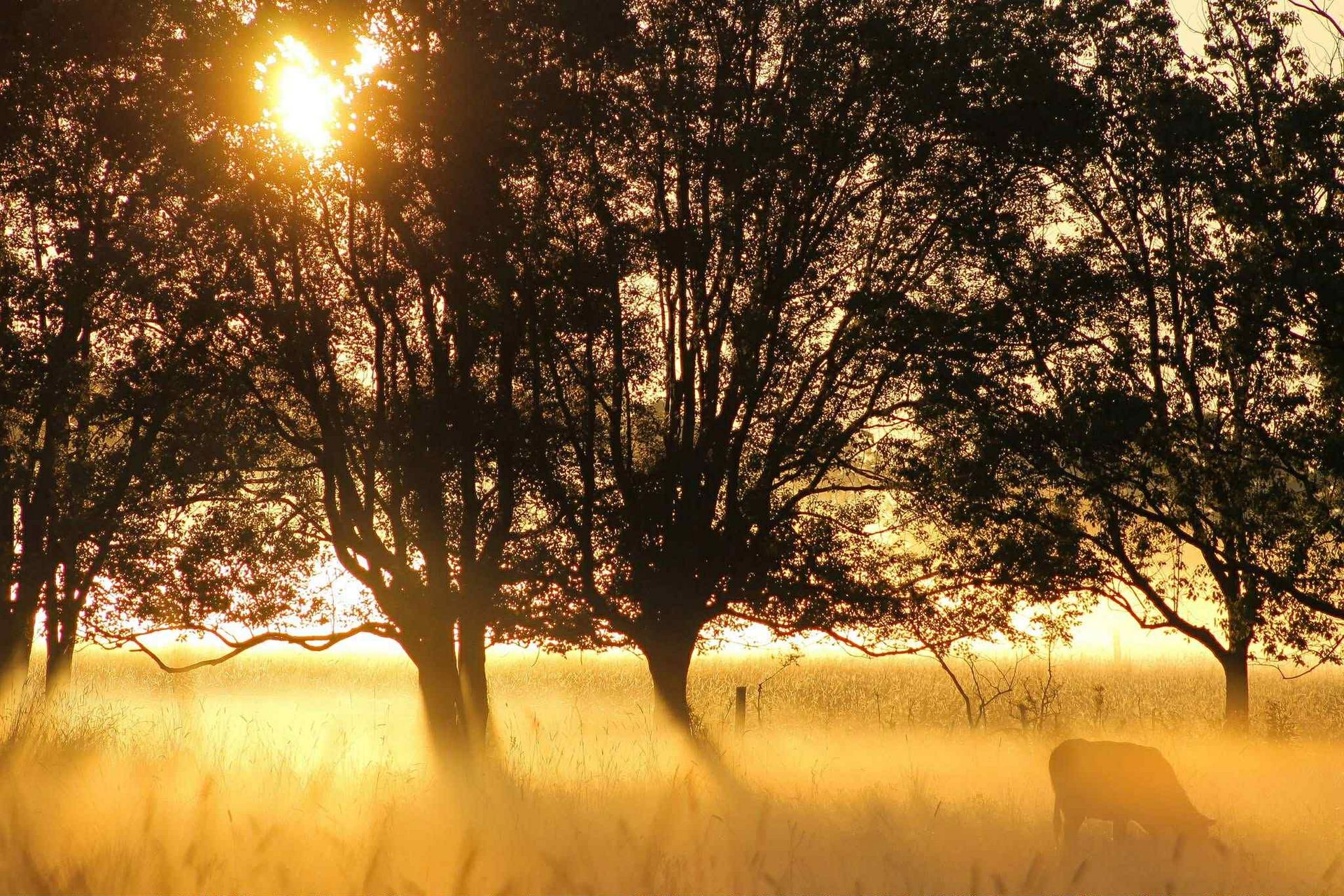
Samantha Watkins's sample photography.
All photos are available for purchase – simply email [email protected]
And she will be happy to assist you.

Active & Upcoming AUCTION!
(Under Auction Listings)
Let us know what you have to sell or auction - it’s FREE to List, and FREE to advertise. Please email [email protected]
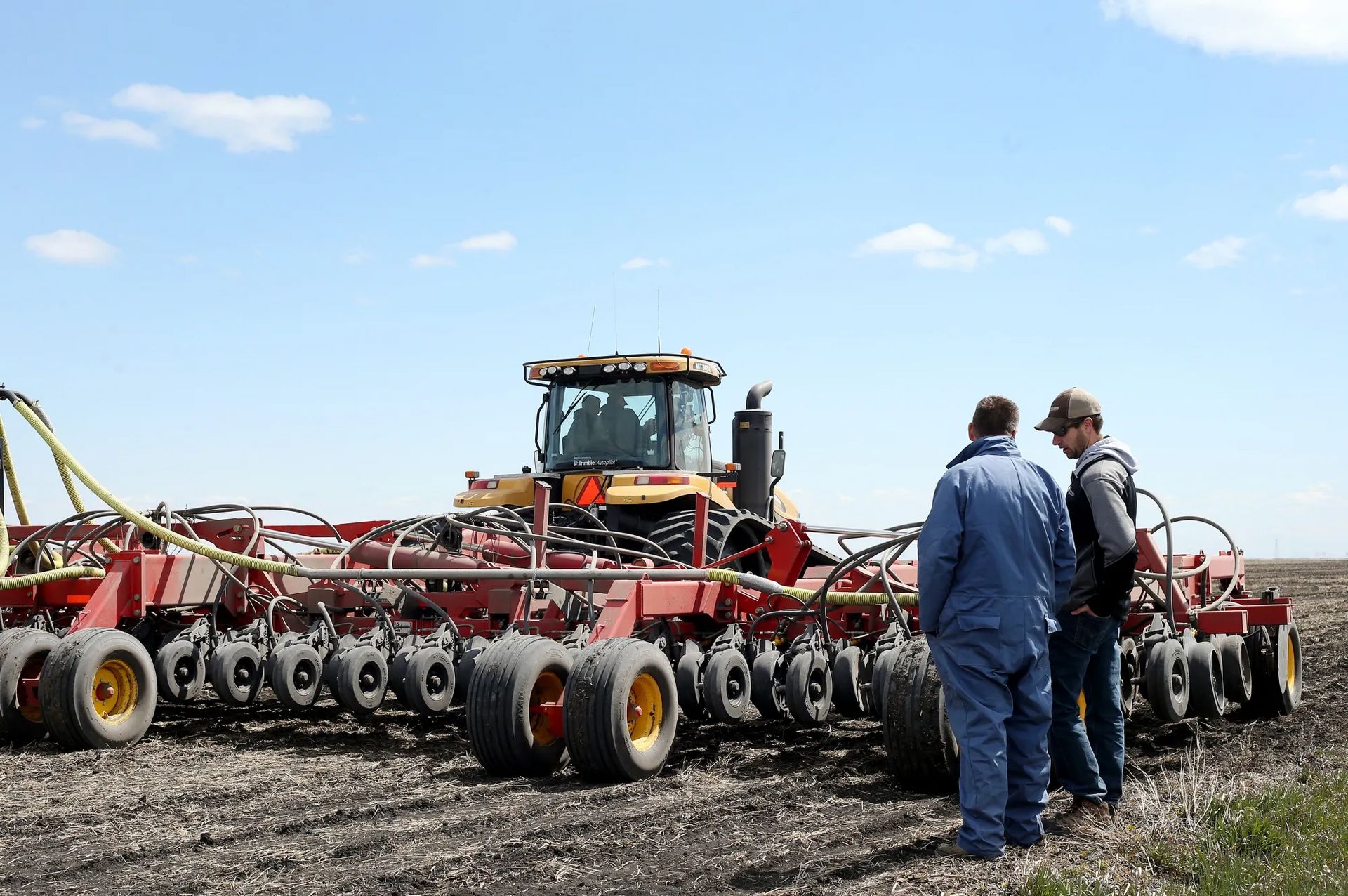

Let us help you with your financial needs. Click Here www.payintime.com.au
Let us help you with your financial needs. Click Here www.payintime.com.au
— Robbie McKenzie

REALM Group Australia
REALM Group Australia (RGA) - originally est. 1992. The most trusted online Ag Marketing System in Australia. Built by Farmers for Farmers! Education is the KEY. True Pioneers - We were the first, and we are still growing. Proud Supporters of the Royal Flying Doctor Service (RFDS) & Ronald McDonald House Charities (RMHC)

